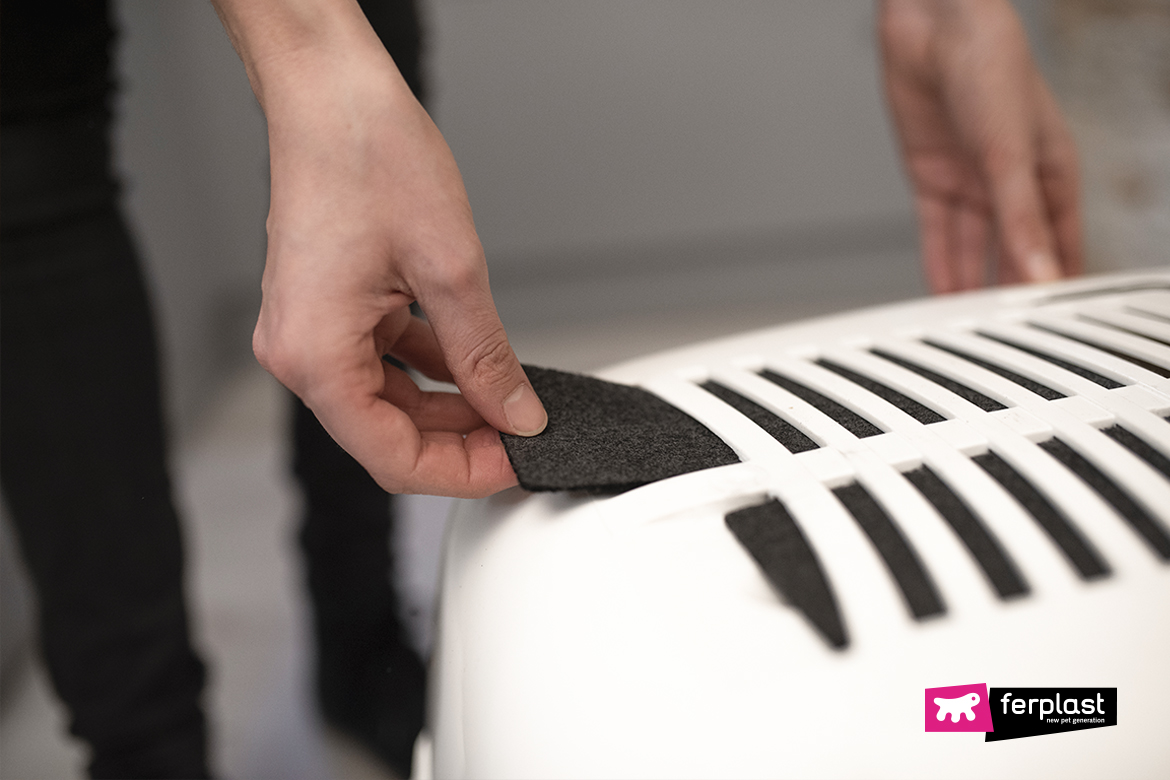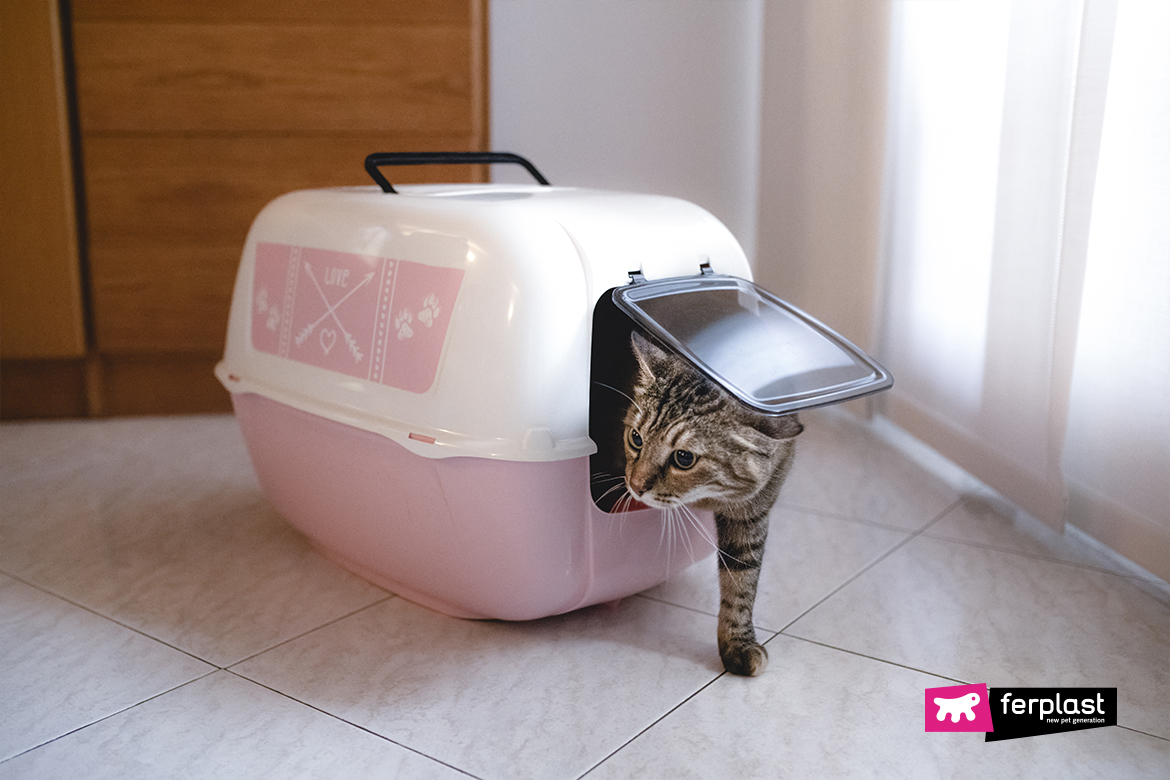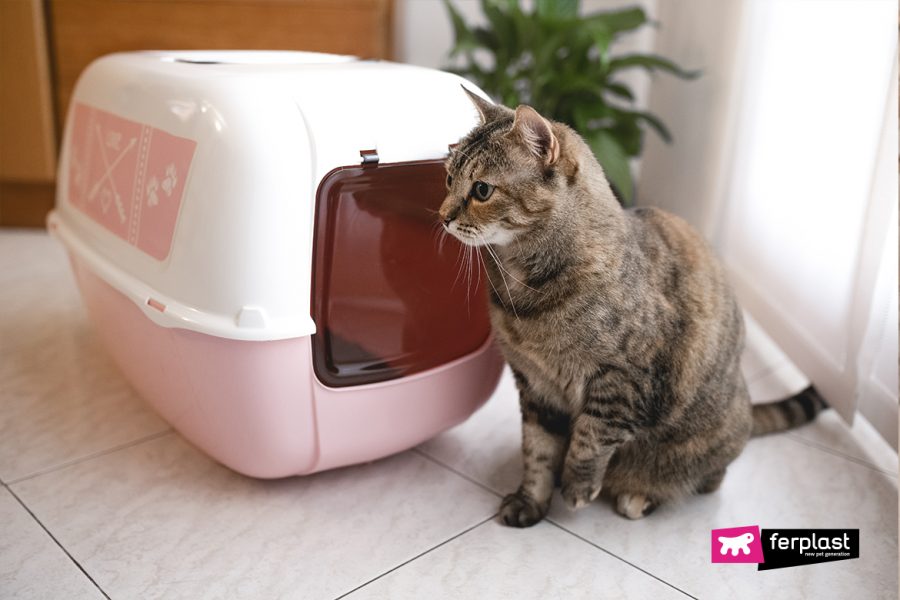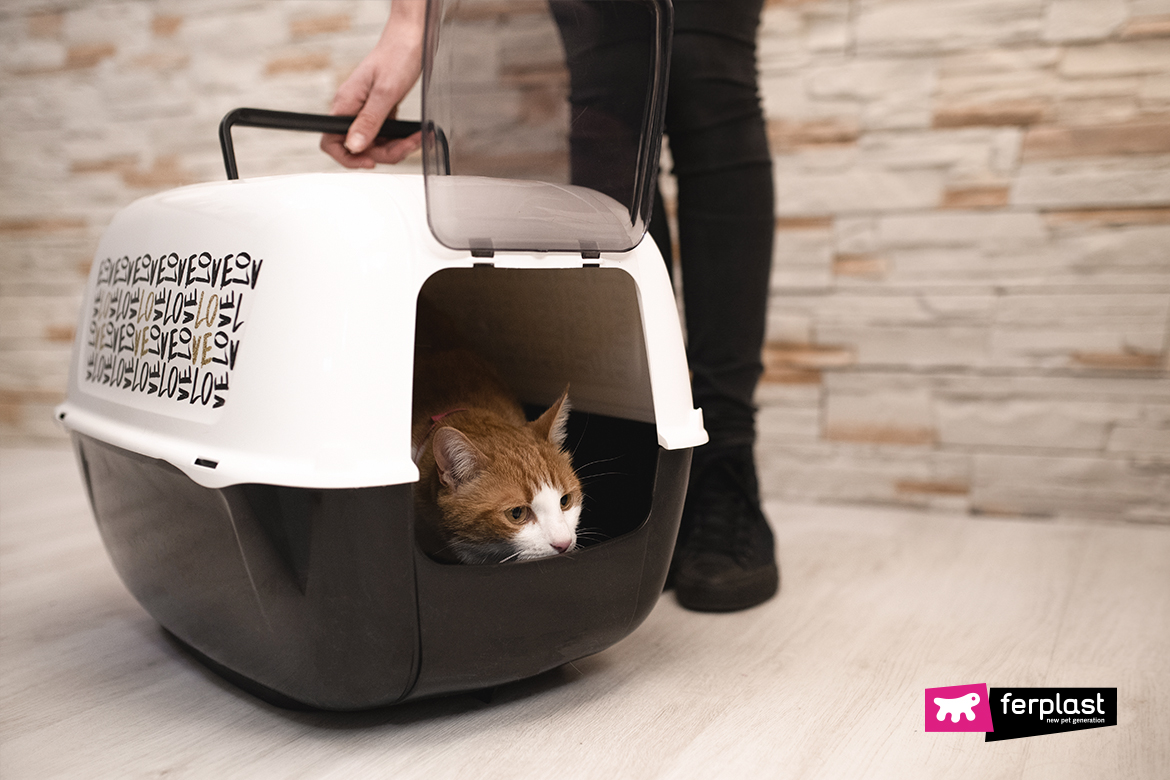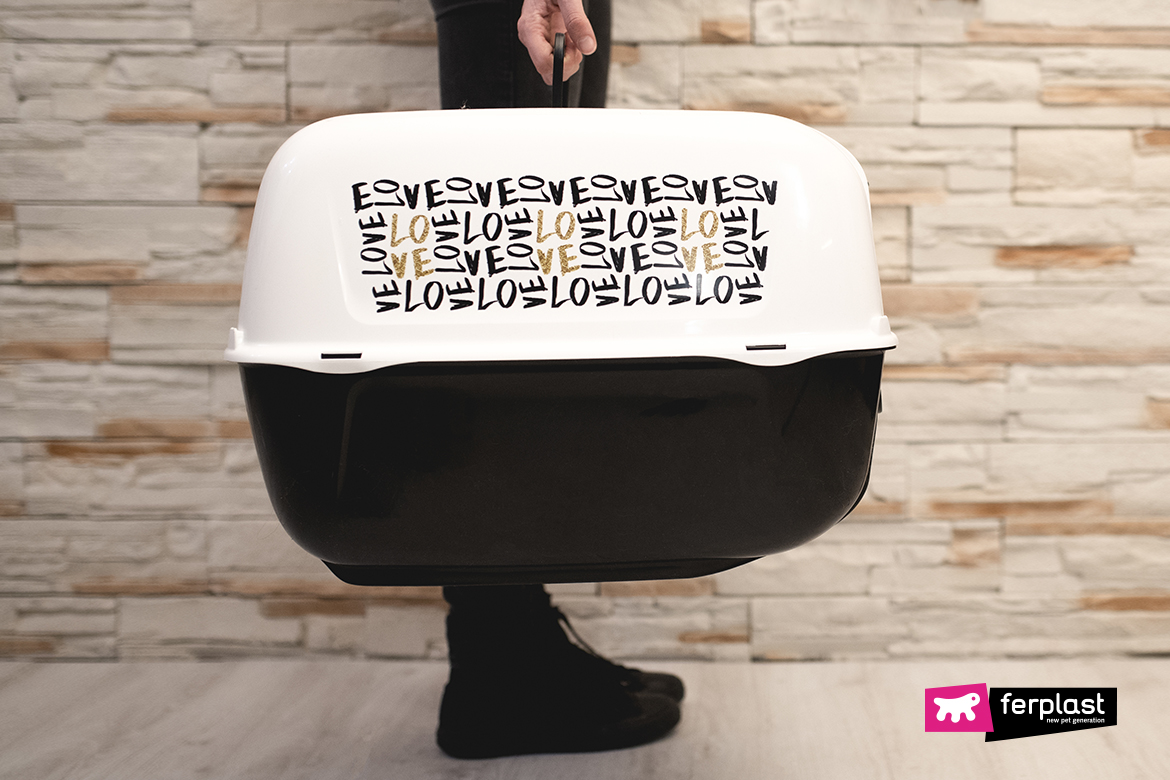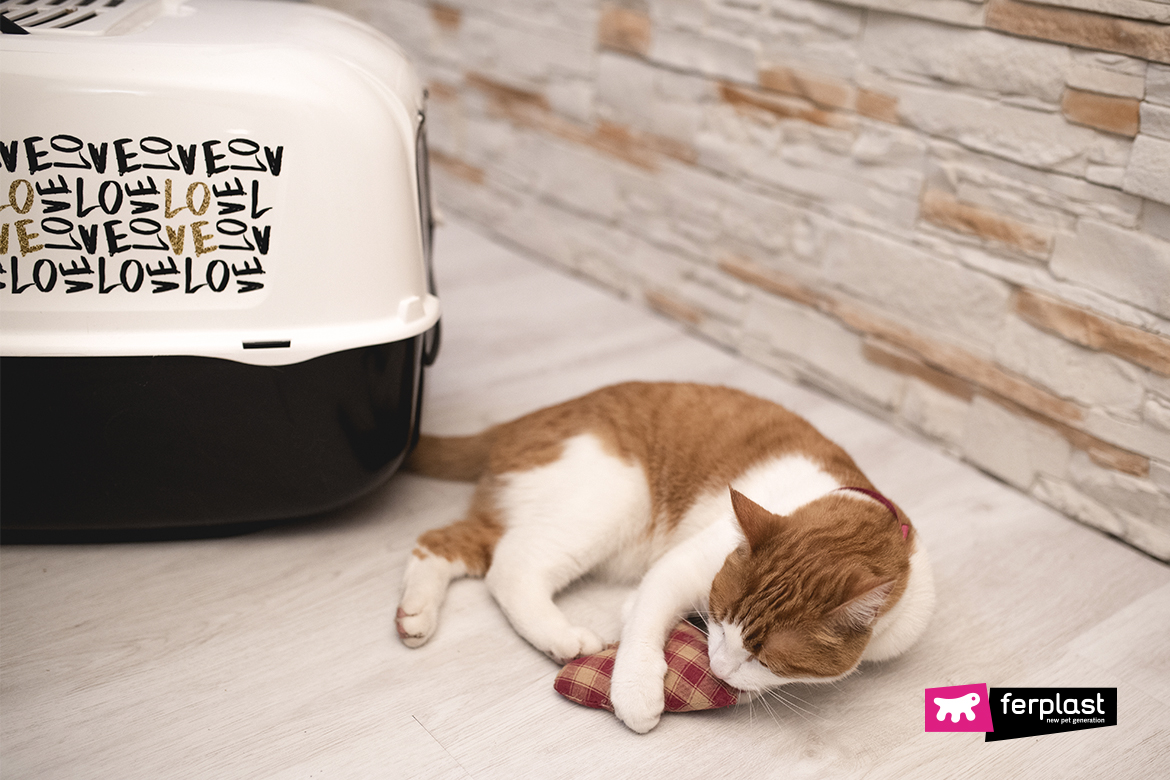Which is the best type of litter for your cat? Buying the right sand to put in your cat’s litter tray is very important, to guarantee proper hygiene in your home and also for the well-being of your cat. Here are some useful tips to help you choose the best litter!
An accessory that all cats living at home need to have is a litter tray, where they can do their business, (open or hooded, depending on their needs), that need to be filled with litter.
What types of litter are available?
1. BETONITE MINERAL CLAY
Betonite mineral clay litter is the most widespread type and has the characteristic of clumping, meaning that the granules composing it dissolve when they come into contact with liquids, forming clumps, which can be easily removed using a poop scoop.
It is best to choose fine-grained type, which is much softer, so that your cat will be able to dig better and more easily, making toilet activities a real walk in the park. This type of litter makes it possible to minimize sand wastage, as you only eliminate the clumps of material rather than the whole tray.
This type of litter is also suitable for the litter trays equipped with a sieving system, like Ferplast’s Magix or Birba.
2. PLANT-BASED AND BIODEGRADABLE
Plant-based litters have become widespread in recent years and are made of natural materials such as discarded barley, corn, wood and paper. For this reason they have the advantage of being easily disposed of without polluting the environment. They can simply be thrown into the thrown into the WC or wet waste bin. They are very soft, absorbent and absorb odours. Being of vegetable origin, they need to be replaced more frequently and your cat may not like all of the materials.
3. SILICA GEL
Silica gel litter has the consistency of fairly large crystals, similar to coarse rock salt. Of all the varieties available on the market, this type of litter is very absorbent for both odours and liquids and can last up to 3-4 weeks. However, being coarse-grained, your cat might find it uncomfortable to move and might scratch the pads on its paws. Silica gel is certainly the most polluting material used as litter and must be disposed of as non-recyclable waste.
Cat litter: which the most informed choice?
No one type of litter is better than the others. The choice varies according to your cat’s preferences and to your environmental sensitivity. Nevertheless, it is best to opt for a fine-grained, clumping type of litter that does not create dust – which is typical of low-quality, cheap sands – and above all one that is capable of absorbing odours. Cats are very delicate animals and, with their highly-developed sense of smell, just a hint of badly-smelling air is enough to put them off wanting to do their business in the litter tray. Our advice is to choose biodegradable types of litter, to protect the environment and limit your environmental impact.
